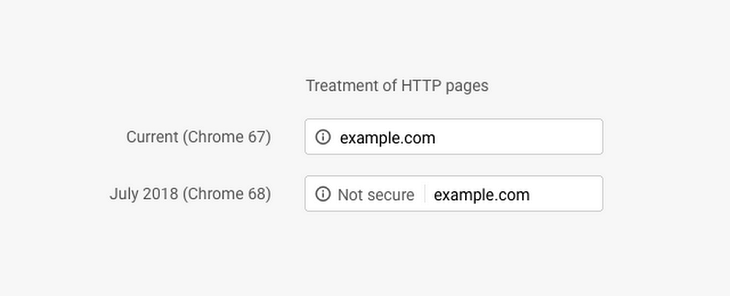Does Your Website Say, “Not Secure?” Here’s What You Should Do
If Chrome has Marked Your Website as “Not Secure”, Here’s What You Should Do
Getting labeled “Not Secure” by the most popular browser in the world isn’t a thing many of you can afford to have, and that’s why you want to get this warning off your site ASAP. Well, we can certainly help you here.
Before we get to the solution to this warning, let’s understand why your site has been marked “Not Secure” in the first place.
Why has My website Been Marked as “Not Secure?”

Google wants to protect the privacy of millions of users, and that’s why it’s been penalizing HTTP websites for quite some time. Google is in charge of the most popular browser on the planet and can leverage its authority to take the web in the direction it wants. When it comes to HTTPS, Google is effectively utilizing its power. The hackers and fraudsters are probably hating this move right now.
To thwart such attacks and protect the privacy of users, HTTPS is used for secure communication of data when it’s in transit. The protection of data here is done through encryption. In other words, the data is turned into an unreadable format. This, in turn, makes it almost impossible for any cyber-criminal to view and tamper with the data.
Such protection is highly imperative when it comes to securing information such as credit cards and passwords. More than security, HTTPS addresses the issue of privacy. Ultimately, that’s what Google wants—to protect our privacy.
Now, the ideas of Google Chrome that says website not secure is clear, let’s move to the next step for fixing the not secure warning.
My Site has been Marked “Not Secure.” What Should I Do?
If your website has been marked “Not Secure,” the first thing you need to do is not freak out. There’s no point in freaking out. The second thing you should do is install an SSL certificate on your web server. We hope you’re familiar with it. If you’re not, let us brief you. An SSL/TLS certificate is what facilitates encrypted connection when it comes to HTTPS. If you want to learn more about SSL certificates, click here.
Now that you (hopefully) understand that you need to install an SSL/TLS certificate, the next thing is choosing the right one. Selecting the correct SSL/TLS cert can be a mind-boggling task as there are so many types of them.
Fortunately for you, we have got this covered.
We have designed a super-awesome SSL Wizard to help you figure out the right type of SSL certificate for your website. Whether you have just a blog with a few hundred viewers or have an e-commerce website with a hundred-billion-dollar revenue, our SSL Wizard can help you no matter what.
Which SSL Certificate Should I Buy? From Where?
You must be feeling good after finding out the type of SSL certificate needed for your website. But here comes another question: finding the right SSL certificate and right SSL provider. There are hundreds of SSL/TLS providers selling the same SSL certificate at different prices. Such amount of options can make a normal human being scratch his/her hair and throw a chair or two at a wall. We certainly don’t want you to do either.
That’s why we’ve come up with this list of World’s best and cheapest SSL providers. This list has been the result of the hard work of many people and many hours. We’ve prepared this list considering all the factors such as price, support, product range, etc.
Final Piece of Advice
We hope that you’ve understood the significance SSL/TLS certificates hold in today’s age. Once getting the SSL certificate, you’ll need to install it on your server. Here’s the link to the ultimate SSL Installation guide that comprises of almost every popular web server, including yours. Once installed, don’t forget to redirect your HTTP pages to HTTPS. We hope we’ve been able to help you with what you were looking for.